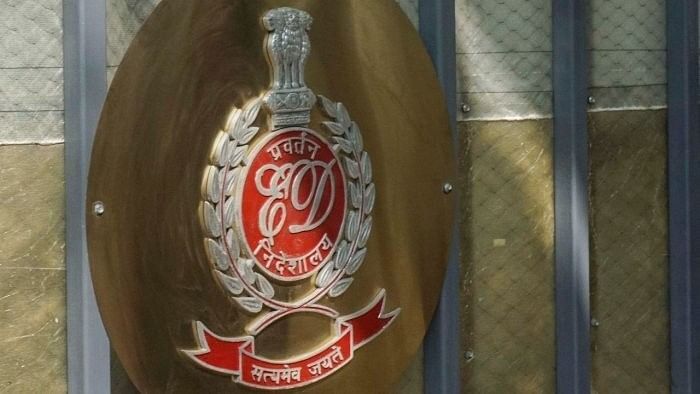
The Enforcement Directorate (ED) logo.
Credit: PTI Photo
Section 420 of the Indian Penal Code states that the offence of cheating carries up to seven years in prison and is a cognizable and non-bailable offence. However, it is mandated that the accused be arrested if the case has exceptional circumstances. Now, if we look at it from the lens of PMLA, any cheating case will also be a scheduled offence under PMLA. Once under PMLA, the accused will not only face harsher bail provisions but also a reversal of the presumption of innocence.
How has the legislative intent of the Prevention of Money Laundering Act (PMLA) shifted?
Enacted in 2002, PMLA prioritised combating money laundering, which posed a serious threat to India’s financial institutions and drained resources from the nation. The fundamental intention of the legislature was to safeguard the nation’s finances and halt money laundering activities facilitated by criminal organisations involved in crimes such as drug trafficking, prostitution, and other activities integrated into the economy.
Under the Act, money laundering involves projecting or claiming the proceeds of crime as untainted property. It entails claiming the proceeds of crime as untainted property subsequent to committing a predicate offence. To initiate an investigation under the PMLA, the alleged predicate offence must generate proceeds of crime that are projected or claimed as untainted property after being added to the Act’s Schedule. Thus, the PMLA was established to handle a specific offence through special procedures.
The overriding concept emphasises that applying PMLA to acts not classified as scheduled offences when they occurred may violate the norms of justice and legality. Amid legal debates on this complex terrain, one point remains undisputed: the retrospective application of the PMLA demands accuracy and prudence. It is a legal component deserving respect as it has the potential to modify legal narratives and redefine the bounds of crime.
Section 3 of the Act penalises attempts to present the proceeds of any predicate offence as legitimate, constituting money laundering. The Act expanded the scope of predicate crimes. Expanding the scope of the Act beyond its intended purpose will harm the economy by allowing the Enforcement Directorate to target companies, which does not serve the public interest. For instance, adding cheating under scheduled offences leads to enforcement disarray.
Over time, amendments have undermined the very essence of the PMLA, deviating from the legislative intent of the Act. The Supreme Court overturned the bail sections in 2017 due to the clear arbitrariness of the scheme formed by the 2012 PMLA Amendment. However, in 2019, Parliament introduced another amendment not to harmonise the system and limit the draconian bail requirements solely when the charges stemmed from serious crime; it eliminated the serious crime reasoning entirely when it came to bail. Parliament asserted that all money laundering was serious, and there was no basis for such a categorization. But in 2022, the court held the 2019 amendment in Vijay Madanlal Choudhary.
Why is there an urgent need to redo PMLA?
Since 2013, PMLA has been extensively used against opposition leaders and parties. As per a reply in parliament, only 195 cases were registered under PMLA in 2018–19, compared to 579 in the first two months of 2023. These cases effectively sum up the two decades of the PMLA’s development: from a stringent law aimed at preventing serious criminals from benefiting from their crimes to a law wielded against anyone suspected of financial misconduct, whenever money is allegedly being exchanged, granting ED officers virtually unrestricted authority to apply harsh PMLA provisions as needed.
In many matters under PMLA, the accused endures detention as an undertrial for half or full time of the sentence without trial commencing. One such case is that of Yes Bank CEO Rana Kapoor, who was detained in 2020 and denied bail as the trial had not commenced. He had already served more than half of the maximum term of incarceration under PMLA. In the meantime, the ED was able to seize assets worth several thousand crores when he got bail in 2023. Pre-trial custody under the act has become torturous, with the process itself serving as punishment.
From 2002 to 2024, the legislative intent of the act has been distorted, primarily for its contemptuous use. The Act and the investigative agency have been weaponized to target opposition in the crosshairs of the government. The stringent bail provisions and the intent of the Act should be revised to prevent misuse of power. Such misuse is not pertinent to one specific party in power, anyone who comes to power may use misuse it.
(The writer is a Delhi- based legal researcher)